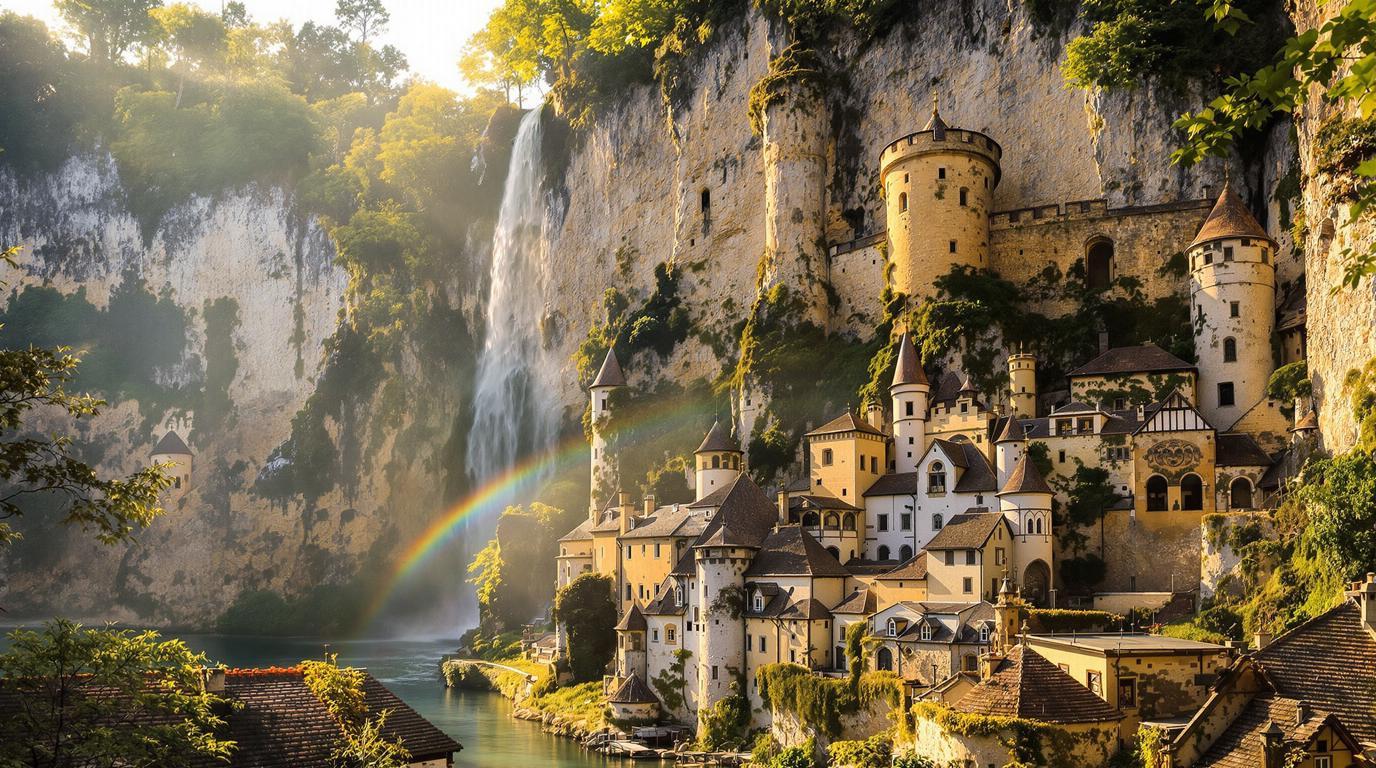France’s most enchanting waterfalls tumble into a fairy-tale village that time forgot – welcome to Autoire, the “French Avalon” where medieval dreams come alive beneath dramatic limestone cliffs.
A limestone amphitheater hiding one of France’s best-kept secrets
Tucked away in southern France’s Lot department sits Autoire, a village so perfectly preserved it earned the coveted “Most Beautiful Villages in France” designation. This medieval gem rests within a natural limestone amphitheater, creating a dramatic backdrop that feels almost too picturesque to be real. With fewer than 350 residents, Autoire offers something increasingly rare in our hyper-connected world: authentic tranquility.
The village’s honey-colored stone buildings with distinctive brown-tiled roofs create a harmonious architectural ensemble that hasn’t changed substantially since the Middle Ages. Narrow cobblestone streets wind past elegant manor houses adorned with turrets and corbelled façades, telling silent stories of noble families who once controlled this strategic valley.
The spectacular 30-meter waterfall that locals consider sacred
The crown jewel of Autoire is undoubtedly its magnificent waterfall. The Cascade d’Autoire plunges 30 meters down moss-covered limestone cliffs, creating a mesmerizing spectacle that changes with the seasons. In spring, melting snow transforms it into a roaring torrent, while summer reveals a more delicate, veil-like cascade.
“Our waterfall has been considered a place of power since ancient times,” explains Marie Dubois, a local historian. “People have always felt its energy – the sound of rushing water echoing against the cliffs creates a natural cathedral.”
For the most magical experience, visit at sunrise when golden light illuminates the mist rising from the plunge pool, creating ethereal rainbows that dance through the spray. The short hike to reach it is manageable for most visitors and rewards with breathtaking valley views along the way.
A castle built into a cliff crack that defied an English invasion
Perched precariously on the cliffside above Autoire sits one of France’s most unusual fortifications. The aptly named Château des Anglais (Castle of the English) isn’t a traditional castle but rather a defensive structure built directly into a natural crack in the limestone cliff face.
Dating back to the 12th century, this remarkable fortress provided a strategic lookout point during the Hundred Years’ War. Its ruins still cling dramatically to the vertical rock face, accessible via a moderately challenging hike that’s well worth the effort for history buffs and photographers alike.
Where knights once feasted: The aristocratic manor that dominates the village
The imposing Château de Limargue stands proudly at Autoire’s edge, its elegant turrets and golden stonework testifying to the village’s historical importance. Built in the 15th century, this privately-owned manor house represents the architectural grandeur that once characterized the region’s nobility.
“Limargue has witnessed centuries of Quercy history,” notes Pierre Laval, local architecture expert. “Its stones tell stories of medieval banquets, political intrigue, and aristocratic life that once defined this region.”
While the château’s interior remains private, its magnificent exterior can be admired from several vantage points throughout the village, particularly stunning when illuminated during summer evenings.
Beyond Autoire: The region’s hidden treasures worth exploring
Autoire serves as an ideal base for exploring France’s spectacular limestone canyons and other medieval villages nearby. Just a short drive away lies Rocamadour, a sacred pilgrimage site dramatically built into a cliff face, while the underground wonderland of Gouffre de Padirac offers boat rides through illuminated caverns.
Nature enthusiasts should venture to nearby medieval villages like Loubressac, where panoramic views stretch across valleys dotted with ancient castles. The region’s gastronomic heritage also deserves exploration – local markets overflow with duck confit, black truffles, and walnuts that have defined Quercy cuisine for centuries.
When to visit: The spring secret that transforms Autoire
While Autoire captivates year-round, April and May reveal the village at its most magical. Wildflowers blanket the surrounding hillsides, the waterfall reaches peak flow, and the weather proves perfect for hiking the network of trails that crisscross this remarkable landscape.
Unlike other hidden European gems, Autoire remains refreshingly uncrowded even during summer months. The village feels worlds away from the tourist crush that overwhelms more famous destinations, offering visitors a rare opportunity to experience authentic French village life that has remained essentially unchanged for centuries.
As evening falls across the limestone cirque and stars appear above ancient rooftops, Autoire reveals its timeless magic – a place where France’s medieval soul still beats strongly in a landscape of extraordinary natural beauty, just waiting to be discovered by those willing to venture beyond the ordinary.
